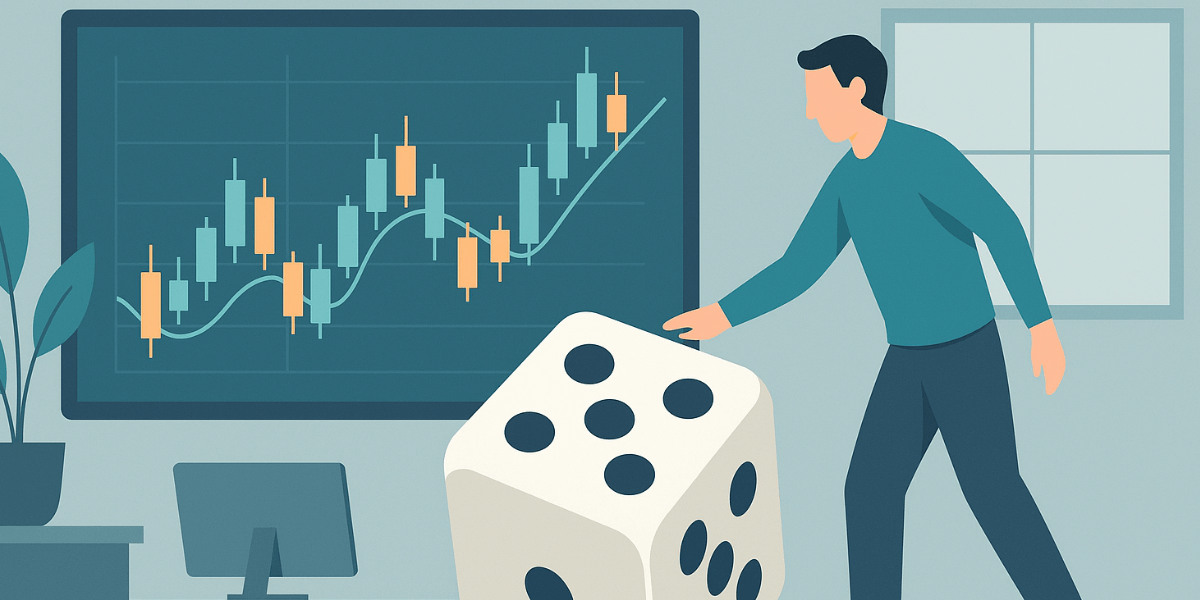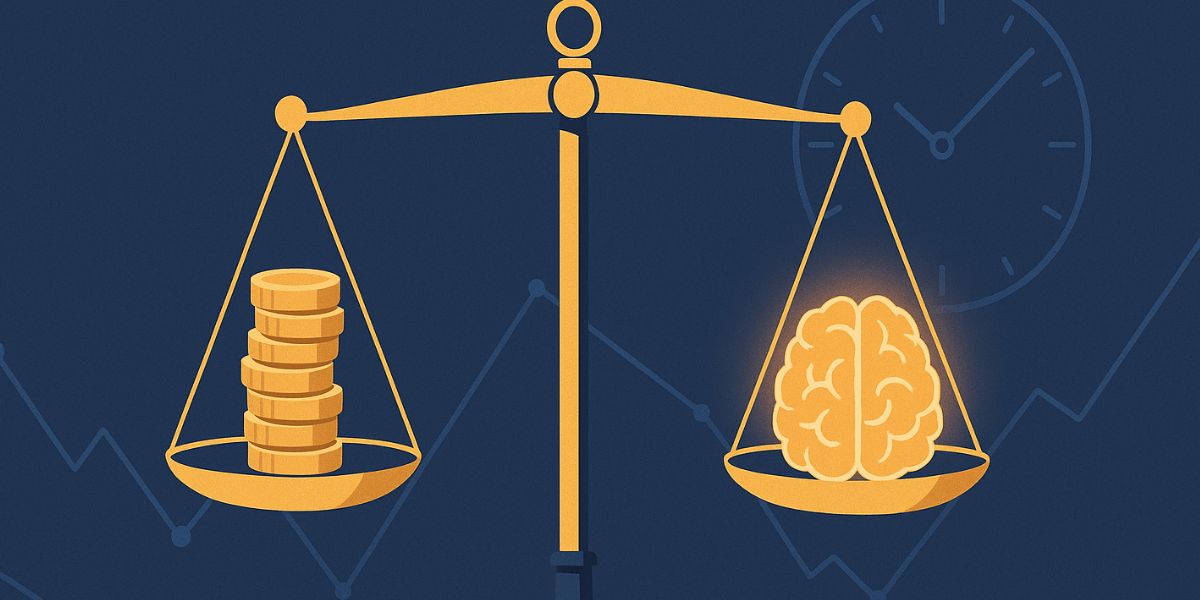Modern trading is not only a contest of ideas and execution; it is a contest for cognitive bandwidth. Every session, traders face an avalanche of headlines, economic calendars, policy commentary, sell-side notes, community forums, influencer streams, and machine-generated sentiment summaries. This relentless deluge carries a hidden tax: the more information we ingest without structure, the more our attention fragments, our preferences oscillate, and our willingness to commit fades. The result is a predictable and costly condition—analysis paralysis—in which the search for certainty becomes the very reason we fail to act.
Analysis paralysis does not discriminate. It undermines new traders who chase every headline and veteran practitioners who fall into verification loops. It appears on quiet days when we feel we should “find something,” and it erupts on volatile days when feeds are flooded with contradictory takes. This article is a comprehensive field manual for recognizing, explaining, and neutralizing analysis paralysis. We will map how overanalyzing news feeds hijacks the brain’s control systems, how it mutates risk perception, and how to build an operating environment where scarce attention produces decisive, repeatable choices. No dogma, no quick fixes—just a rigorous strategy for converting information into action.
What Exactly Is Analysis Paralysis?
Analysis paralysis is a decision failure triggered by excess input. In markets, it usually begins with a reasonable intention—to gather more data to avoid an error. But past a tipping point, additional input increases cognitive conflict rather than reducing it. The trader’s internal dialogue shifts from “Is this probability attractive?” to “Have I checked enough sources?” The question quietly changes from probability to permission, and momentum stalls.
Two properties define the market version of analysis paralysis:
- Latency. The time from signal recognition to execution balloons as the mind loops through more sources, timeframes, and opinions.
- Volatility of conviction. Each new item of news temporarily rewrites the trader’s belief, producing whipsaw conclusions without corresponding improvement in accuracy.
Because markets punish delay and inconsistency, this combination quietly erodes expectancy. You can possess a profitable strategy and still lose money if the analysis engine that precedes it consistently jams or flips.
Why News Feeds Are Uniquely Paralyzing
Not all information causes paralysis. Long-form research, well-structured books, or methodical backtests rarely immobilize the trader. News feeds, however, are engineered for speed, recency, and emotional salience. Several design choices make them especially hazardous to decision quality:
- Recency maximization. Ranking emphasizes the newest item, not the most relevant. The brain confuses “latest” with “most important.”
- Variable reinforcement. Every refresh might produce a high-value nugget. This intermittent reward schedule drives compulsive checking regardless of actual signal-to-noise.
- Conflict amplification. Platforms reward controversy and high-arousal emotion. The trader experiences rapid alternation between confident bullish and bearish takes, inflating internal conflict.
- Source ambiguity. Credentials and calibration are often unknown or unverified; popularity masquerades as accuracy.
The feed is not evil; it simply optimizes a different objective. It seeks engagement. Traders need expectancy. When we mistake engagement for expectancy, paralysis follows.
The Cognitive Science: How Overanalysis Freezes Action
To act under risk, the brain coordinates several systems: perception (what is happening?), valuation (what is it worth?), and control (what will I do?). Overanalyzing news feeds disrupts each layer.
Working Memory Saturation
Working memory handles only a limited number of chunks at a time. Rapid-fire headlines exceed this capacity, so we “pin” items via tabs, screenshots, or notes. The mental stack overflows. Once saturated, the brain falls back to shallow heuristics or, more often, no action at all.
Conflict Detection Overdrive
The anterior cingulate cortex monitors conflict between options. Contradictory headlines heighten conflict signals, which in turn suppress motor execution pathways. The organism waits for “clearance,” which rarely arrives in noisy environments.
Dopamine and the Search Loop
Dopamine spikes in anticipation of discovery—before we verify quality. Feeds exploit this by delivering novelty at high frequency. We become addicted to the feeling of almost understanding, confusing the anticipation of insight with insight itself. Execution gets deferred to the next refresh.
Loss Aversion Meets Perfectionism
Humans weigh losses more than equivalent gains. When mixed with the belief that “one more headline” will remove doubt, we pursue a mythical zero-regret entry. The standard for action rises faster than information can satisfy it, and inaction masquerades as prudence.
From Overanalysis to Performance Drift
Paralysis is not always obvious. Frequently, it manifests as subtle but compounding performance drift:
- Signal decay. Valid setups age while we chase confirmation, reducing reward-to-risk.
- Inconsistent sizing. Hesitation morphs into a smaller size on good trades and a larger size on late, emotionally charged followers.
- Execution fragmentation. Entries split across multiple prints at worse prices due to indecision; exits become reactive rather than rules-based.
The desk ended the week claiming “nothing was clean,” when the real culprit was an overloaded input funnel that delayed every greenlight.
Anatomy of a Paralysis Day
Consider a realistic sequence:
- Pre-market, the trader plans to long an index on a specific pullback if yields stall.
- Fifteen minutes later, conflicting headlines appear: recession odds up, then earnings beats, then policy hawkishness.
- The feed cycles through three strong narratives in ten minutes. Conviction oscillates. The trader opens additional tabs.
- The planned pullback occurs. Because the internal story is unsettled, size is cut in half and entry is late.
- Price moves in the intended direction, but the appearance of a bearish tweet triggers exit, followed by regret, followed by a revenge scalp that flips the morning from green to red.
Notice: the market did not sabotage the trade—the feed did. Or rather, the trader’s unstructured relationship with the feed did.
Minimalist Information Architecture: Less, But Better
Information minimalism is not ignorance; it is specialization. The goal is to collect the few inputs that reliably improve expectancy and discard those that merely anesthetize uncertainty. To implement, we must define three tiers of input:
- Tier 1: Mandatory. Economic calendar, primary catalysts, and structural flows are directly tied to your instrument.
- Tier 2: Opportunistic. Cross-asset confirms, unusual flow, and a limited number of calibrated, high-signal analysts.
- Tier 3: Entertainment. Everything else. Not forbidden, but quarantined outside trading hours.
When traders prioritize this, analysis time compresses and execution accelerates without a loss in quality.
A Practical Operating Framework
Below is a field-tested structure that transforms chaotic feeds into a well-organized decision-making pipeline.
1) Define Questions Before Seeking Answers
Write the two or three questions the session must answer (e.g., “Is breadth improving above yesterday’s high?” “Are yields confirming risk-on?”). Only seek news that bears on these questions. This prevents indiscriminate grazing.
2) Time-Box Intake
Constrain pre-market scan to a fixed window (for instance, 20–30 minutes). Mid-session, allocate one brief window for updates. Eliminate continuous refresh. The rule: outside the window, only alerts you designed can interrupt.
3) Build an Alert-First Environment
Replace watching with waiting. Use rules-based, pre-filtered alerts (levels, spreads, realized vol shifts). When an alert triggers, you know it passes your Tier 1 threshold and merits attention.
4) Translate Narratives to Conditions
Every headline should be converted into testable conditions (e.g., “hawkish tone” becomes “2y yield breaks and holds above X,” or “USD strengthens vs. cyclical basket by Y”). If you cannot convert it, you cannot trade it.
5) Pre-Commit Execution Rules
Document entry, size, invalidation, and time-stop before feeds open. If a news item arrives, it must alter a condition to change the plan—not merely your mood.
6) Journal Motive, Not Just Method
Alongside setup tags, add a “Why now?” line. If the honest answer is “A thread spooked me,” mark it. Patterns will surface quickly.
Comparison Table: Overanalysis vs. Focused Process
| Dimension | Overanalyzing News Feeds | Focused Decision Framework |
|---|---|---|
| Information Flow | Continuous, unfiltered, emotion-optimized | Time-boxed, pre-filtered, question-driven |
| Conviction Stability | Oscillates with each headline | Stable; tied to objective conditions |
| Execution Latency | High; repeated verification loops | Low; rules pre-committed |
| Sizing Discipline | Inconsistent; emotion-led | Consistent; risk-defined |
| Outcome Variance | Wider; whipsaw and regret | Narrower; repeatable |
| Psychological Cost | High; decision fatigue and self-doubt | Lower; attention preserved |
Debiasing Tactics That Actually Work
Generic advice—“be disciplined,” “trust your plan”—does not survive first contact with a dopamine-optimized feed. These tactics do.
Friction Inserts
Insert a 60–90 second pause between intent and click for trades influenced by fresh headlines. During the pause, answer two prompts: “What condition changed?” and “What invalidates this right now?” This restores executive control without blocking agility.
Two-Source Rule
Any discretionary change prompted by news requires confirmation from a second, independent domain (price, flow, or cross-asset). If unavailable, the change is deferred. This reduces headline whipsaw.
Fixed Review Windows
Review positions on a fixed cadence aligned with your timeframe. Outside the window, ignore most noise. This fights recency bias and the reflex to micromanage on every ping.
Contrarian Checklist
When consensus feels overwhelming, systematically ask: “What measurable would prove this narrative wrong today?” List two. If neither is monitored, you are not trading—you're following.
Designing a News Stack With Signal Integrity
Build your stack around roles rather than brands:
- Calendar and Primary Releases: One authoritative source with alarms.
- Market Tape: Direct price/volume/volatility feeds with custom alerts.
- Cross-Asset Lens: A concise dashboard correlating your instrument with two or three key drivers.
- Calibrated Commentary: A very short list of voices with tracked accuracy for your domain.
Everything else belongs to a “sandbox” consumed off-hours for learning, not for live decision-making.
Metrics to Detect Emerging Paralysis
If it matters, measure it. Add these to your journal or dashboard:
- Decision Density (per hour). Spikes can signal scattered attention.
- Plan-to-Action Latency. Time from rule trigger to first fill.
- Pre vs. Post-Headline Adjustments. Count how often last-minute news alters size or stop; track outcomes.
- Tab Count / Window Switching. A rough but revealing proxy for cognitive churn.
Over a month, these reveal whether feeds are value-add or value-extracting.
Team and Desk Protocols
Paralysis can become contagious on desks that socialize news every minute. Countermeasures:
- Standups with Questions, Not Takes. Teams share “today’s questions,” not “today’s opinions.” Keeps focus on testable conditions.
- Red Team Rotation. One member argues the opposite case with data. Prevents drift toward narrative monoculture.
- Execution Firebreaks. Social channels muted during scheduled opening windows; only pre-specified alerts can interrupt.
Case Studies
Case 1: Macro Narrative Overload
A rates-focused trader consumed real-time threads during a central-bank day. Conflicting interpretations of one sentence in the statement whipsawed conviction three times in five minutes. The planned fade—backed by positioning data—was missed; a later chase entry delivered subpar R:R. After implementing a rule that statements and dots must translate to two yield conditions before any change, the trader’s win rate on event days rose while stress dropped.
Case 2: Earnings Season Noise
An equities day trader tracked multiple live blogs plus chat rooms. Each micro-take moved his hands. By switching to a template that required three items—surprise magnitude, guide delta, and first-minute liquidity signature—before any action, he cut trades by 40% and raised median R multiple, despite “knowing less” in the moment.
Myths That Sustain Overanalysis
- Myth: More sources equal more edge. Truth: Beyond a small set, sources add correlation, not information.
- Myth: The right headline removes risk. Truth: Headlines rearrange risk; they do not erase it.
- Myth: Fastest reader wins. Truth: The trader who converts input to conditions fastest—then executes—wins.
A Minimal Protocol for the Next Headline
- Ask: “Which of my pre-written questions does this answer?” If none, ignore.
- Translate to conditions. If not translatable, ignore for now.
- Seek a second-domain confirmation (price/flow/cross-asset).
- If conditions align, execute according to pre-committed rules. Size from risk, not from emotion.
- Journal motive in one sentence. Move on.
Conclusion
Markets will always throw more information at you than your brain can absorb. The aim is not to out-read the world; it is to out-decide it. Overanalyzing news feeds feels responsible because it mimics diligence, but diligence without design degenerates into delay. The practical edge is architectural: define questions, constrain intake, convert stories to conditions, and defend your execution lane from last-second noise. When your information environment is engineered to respect attention, analysis regains its proper role—not as a permission slip to act, but as a tool to act well. Clarity is rare capital. Spend it on trades, not on tabs.
Frequently Asked Questions
What exactly triggers analysis paralysis in trading?
It is triggered by excess, unfiltered input—especially rapid, conflicting headlines—that saturate working memory and heighten internal conflict signals. The brain then postpones action in search of impossible certainty.
Isn’t gathering more information always better?
Only up to a point. After a narrow threshold, additional input increases noise faster than it improves accuracy. Expectancy falls because latency rises and conviction oscillates.
How do I know my news stack is too large?
Warning signs include frequent plan changes after new headlines, a growing tab count, shrinking position sizes on valid signals, and a rising gap between trigger and execution.
What should I read first each day?
Start with your own questions and levels, then check a concise catalyst calendar, then cross-asset confirms. Commentary comes last and only if it maps to testable conditions.
How can I reduce headline-driven whipsaw?
Adopt a two-source rule: a headline can influence action only when confirmed by an independent domain—price behavior, flow, or a relevant cross-asset.
Do alerts help or hurt?
Alerts help if they are rules-based and scarce. They hurt if they replicate the feed’s noise. Design them to fire only when your key conditions are met.
What is the fastest intervention mid-session?
Use a friction insert: pause 60 seconds before a news-influenced trade and write the specific condition that changed and the immediate invalidation. If you cannot write it, skip.
How do I measure improvement?
Track plan-to-action latency, decision density, and the frequency of post-headline changes. Expect latency and changes to decline as expectancy improves.
Is total news abstinence the answer?
No. The goal is not zero news but right-sized news—inputs that directly affect your edge, consumed at scheduled times and translated into conditions before they touch execution.
What single habit yields the biggest gain?
Translate every narrative you care about into a small set of measurable conditions and pre-write your execution rules. This converts fragile opinion into robust, repeatable action.
Note: Any opinions expressed in this article are not to be considered investment advice and are solely those of the authors. Singapore Forex Club is not responsible for any financial decisions based on this article's contents. Readers may use this data for information and educational purposes only.







